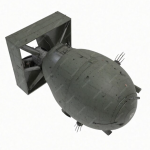Mirrors, in the context of optics, are surfaces that reflect light. They come in various forms, including plane mirrors and concave or convex mirrors. Here are some of the key aspects to consider:
Types of Mirrors: Mirrors can be broadly categorized into three types: plane mirrors, concave mirrors, and convex mirrors.
Functions: Mirrors are primarily used for reflection. Plane mirrors reflect light with minimal distortion, making them suitable for personal grooming and decoration. Concave mirrors converge light, enabling applications like makeup mirrors and telescopes. Convex mirrors diverge light and find use in safety equipment such as side-view mirrors on vehicles.
Advantages: Mirrors are simple, durable, and relatively inexpensive. They are highly efficient in reflecting light without consuming power.
Disadvantages: They do not capture images or videos, limiting their utility in scenarios requiring visual recording.
Now technology changed the simple mirrors into smart mirrors: tech4gods
Cameras
Cameras are optical devices designed for capturing and storing images or videos. They are commonly used in photography, videography, surveillance, and various other applications. Here are the main points to consider when discussing cameras:
Types of Cameras: Cameras come in various types, including digital cameras, DSLRs (Digital Single-Lens Reflex), mirrorless cameras, and action cameras.
Functions: Cameras capture images or videos using a combination of lenses, sensors, and image processing technology. They offer versatility, enabling users to record memories, create art, or enhance security.
Advantages: Cameras are the go-to choice for image and video capture. They provide high-quality output, customization options, and the ability to instantly share digital media.
Disadvantages: Cameras can be expensive, delicate, and require power sources. They may not be as efficient as mirrors for simple reflection tasks.
Mirrors vs Cameras in Daily Life
How do mirrors and cameras impact our everyday lives? Let’s explore their roles and influence.
Mirrors in Daily Life
Mirrors are an integral part of our daily routine. From checking our appearance before heading out to using them in interior design, mirrors offer several advantages. They provide:
Self-Reflection: Mirrors allow us to assess our appearance and ensure we look presentable.
Enhancing Spaces: Mirrors are used in interior design to make spaces look larger and more vibrant.
Safety on the Road: Convex mirrors in traffic provide a wider field of view and enhance safety.
Cameras in Daily Life
Cameras, on the other hand, have revolutionized the way we capture and share moments. They offer:
Preserving Memories: Cameras help us immortalize cherished moments, from family gatherings to travel experiences.
Artistic Expression: Photography and videography allow for creative expression and storytelling.
Security and Surveillance: Cameras play a crucial role in ensuring safety and monitoring in various settings.
Mirrors vs Cameras: Advantages and Disadvantages
Let’s weigh the pros and cons of mirrors and cameras for a better understanding of their utility.
Advantages of Mirrors
Cost-Efficient: Mirrors are cost-effective solutions for tasks that require reflection.
Instant Use: Mirrors do not require setup or power sources. They are always ready for use.
Decorative: Mirrors can enhance interior spaces, adding aesthetic value.
Disadvantages of Mirrors
Limited Functionality: Mirrors are restricted to reflection and do not capture images or videos.
Fragile: They are susceptible to breakage and damage.
Advantages of Cameras
Versatility: Cameras offer a wide range of applications, from professional photography to casual snapshots.
High-Quality Output: Cameras provide superior image and video quality.
Instant Sharing: Digital cameras facilitate instant sharing through online platforms.
Disadvantages of Cameras
Costly: High-quality cameras can be expensive, and additional equipment may be required.
Power Dependency: Cameras rely on batteries or power sources.
Mirrors vs Cameras: Which Is Right for You?
The choice between mirrors and cameras largely depends on your specific needs and preferences. Here are some factors to consider:
Purpose: Consider whether you need reflection or image/video capture.
Budget: Evaluate your budget and the investment you are willing to make.
Portability: Think about the portability and convenience required for your intended use.
Longevity: Consider the durability and expected lifespan of the device.
Quality: Assess the quality of the output you desire, whether for personal use or professional work.
Conclusion
In the mirrors vs cameras debate, the choice ultimately comes down to your specific needs and intended usage. Mirrors are ideal for reflection tasks and enhancing interior spaces, while cameras excel in capturing and sharing images and videos. Make an informed decision based on your requirements, budget, and preferences.





